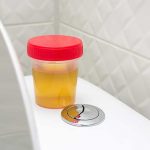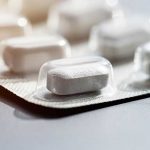- Opioids & Drug Overdose
- Opioid Overdose Symptoms
- Responding To An Opioid Overdose
- Opioid Overdose Prevention
Symptoms of an opioid overdose include severe respiratory depression (slowed or stopped breathing), low blood pressure, and difficulty staying awake.
Many of these symptoms appear as visible signs to others. If you see a loved one experiencing shallow breathing, gurgling, pinpoint pupils, or a comatose state, they may be experiencing a drug overdose on opioids and require immediate medical help.
Opioid overdose symptoms can be reversed with naloxone, an opioid antagonist sold as a nasal spray. The risk of opioid overdose increases if opioids are a target of substance abuse.
Opioids & Drug Overdose
Opioids bind to specific receptors in the central nervous system (CNS). The CNS includes the brain and spinal cord, and controls many vital functions of the body.
When taken as directed, opioids can cause side effects such as low blood pressure, decreased heart rate, and slowed breathing. In higher doses, these effects can be exacerbated to life-threatening levels.
The CDC reported over 75,000 opioid overdose deaths from April 2020 to April 2021. Fentanyl was the primary cause of opioid overdose deaths in this time period, while oxycodone, hydrocodone, and other opioids also contributed to this number.
Opioid Overdose Symptoms
Characteristic symptoms of an opioid overdose include:
Respiratory Depression
Respiratory depression is a state of extremely slowed breathing. After ingesting high doses of opioids, the central nervous system may slow down, causing vital functions such as breathing, blood flow, and heart rate to slow down as well.
Respiratory depression can also inhibit oxygen flow to crucial parts of the body, such as the brain. A brain deprived of oxygen, known as hypoxia, can lead to coma, stroke, and death.
Gurgling/Vomiting
Gurgling or vomiting can result from respiratory depression, due to a victim’s reduced ability to breathe and swallow. Gurgling can be a telltale sign of an opioid overdose, and is also known as a “death rattle” when heard under these circumstances. Gurgling may also sound similar to unusual snoring.
If a loved one is making unusual snoring sounds and seems to be asleep, they may actually be experiencing an opioid overdose.
Pale Or Clammy Skin
Clammy skin may be accompanied by limp muscles, and a person exhibiting these symptoms may have difficulty moving. These symptoms may be caused by reduced body temperature and motor control.
The CNS is responsible for regulating these areas of the body. During severe CNS depression, the brain is inhibited in sending regulatory signals, disrupting a delicate balance in the process.
Responding To An Opioid Overdose
The effects of an opioid overdose can be reversed with naloxone. Naloxone is an antagonist that binds to the same receptors as opioid drugs, reversing their effects in a potentially life-saving manner.
Naloxone is available as a nasal spray through the brand Narcan, and can be administered by civilians without professional training. A family member, loved one, or bystander administering naloxone may also give rescue breathing to an overdose victim, to sustain the victim until emergency help arrives.
Outside of naloxone, opioid overdose treatment often involves treating overdose symptoms. First responders may try to restore breathing through resuscitation and establish airway control.
If a patient needs further treatment beyond naloxone, medical professionals must be present to give treatment.
Opioid Overdose Prevention
The CDC is currently drafting new guidelines for prescribing opioids for chronic pain. However, widespread efforts to reduce opioid abuse and overall use may not take effect immediately.
Practicing safe opioid use can reduce the risk of an overdose. Safe opioid use may involve only taking opioid medications as directed, and only taking them with a prescription.
Conversely, mixing opioids with alcohol, sedatives, or illicit drugs are forms of unsafe drug use. Taking opioids unsafely can be a risk factor for a drug overdose.
Opioid Addiction Treatment
Although a person may have already experienced the harmful effects of opioids, it can be difficult to stop taking them. Opioids can cause dependency and withdrawal symptoms due to their habit-forming nature, feeding into a cycle of misuse and negative health effects.
To reduce the risk of opioid abuse and overdose in a loved one, a professional treatment program can help. Opioid use treatment programs may begin with a detox process where the drug is flushed out of your system.
After a successful detox program, patients may be recommended for various treatment options depending on their condition. To learn if an outpatient program is a good fit for yourself or a loved one, please contact Northeast Addictions Treatment Center today.
Continue Reading: Drug Overdose Deaths In 2021
Sources
- Centers for Disease Control and Prevention — Federal Register Notice: CDC’s updated Clinical Practice Guideline for Prescribing Opioids is now open for public comment
- National Institute on Drug Abuse — Prescription Opioids DrugFacts
- National Library of Medicine: StatPearls — Opioid Overdose
- Substance Abuse and Mental Health Services Administration — SAMHSA Opioid Overdose Toolkit
Written by
Northeast Addition Editorial Team
©2024 Northeast Addition Center | All Rights Reserved
This page does not provide medical advice.






